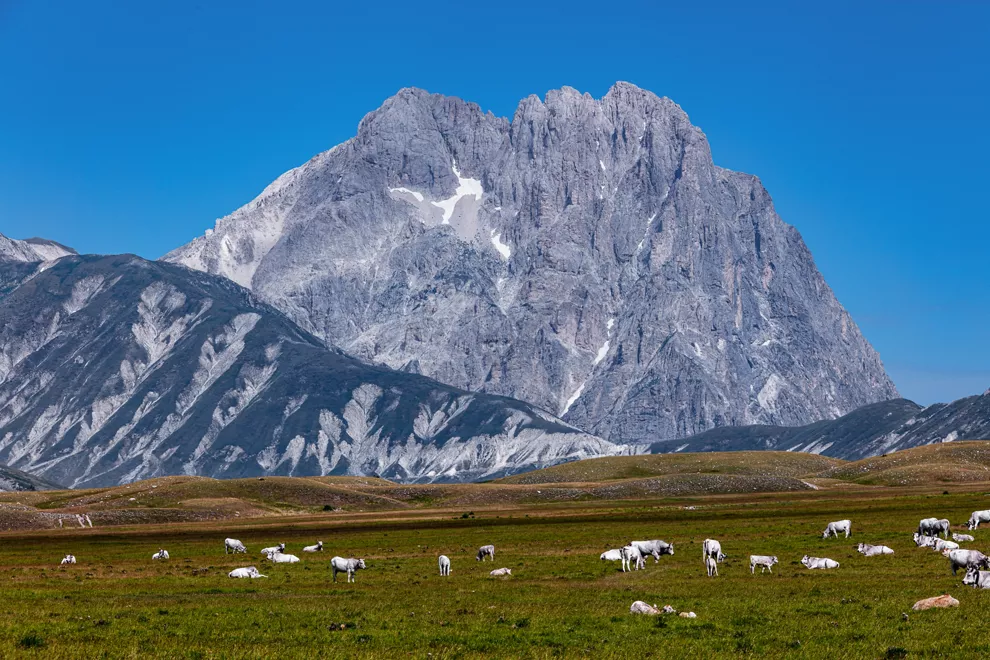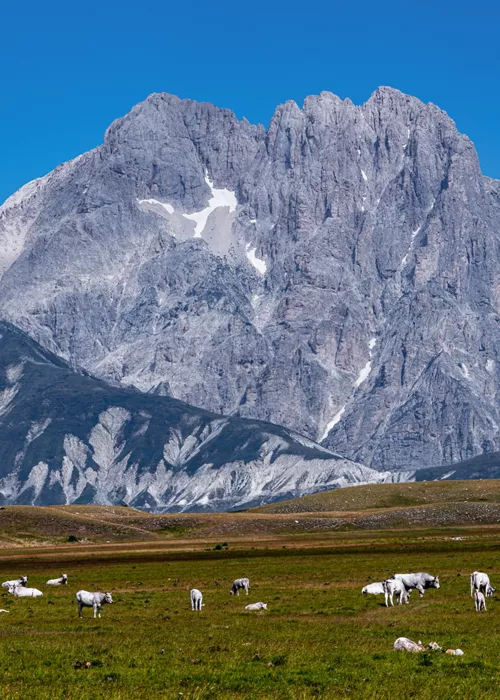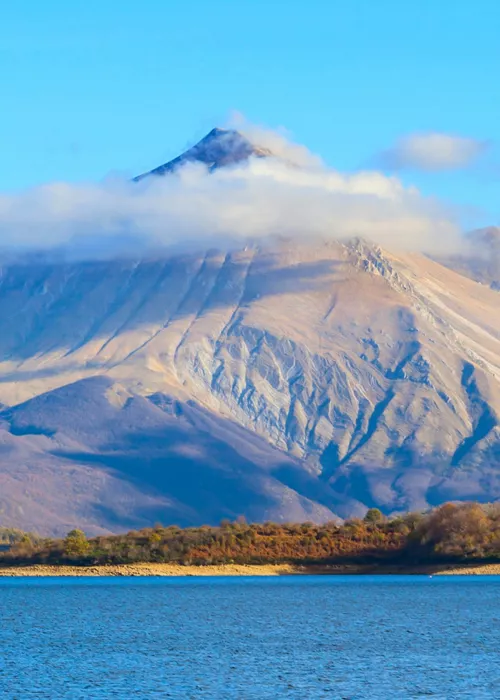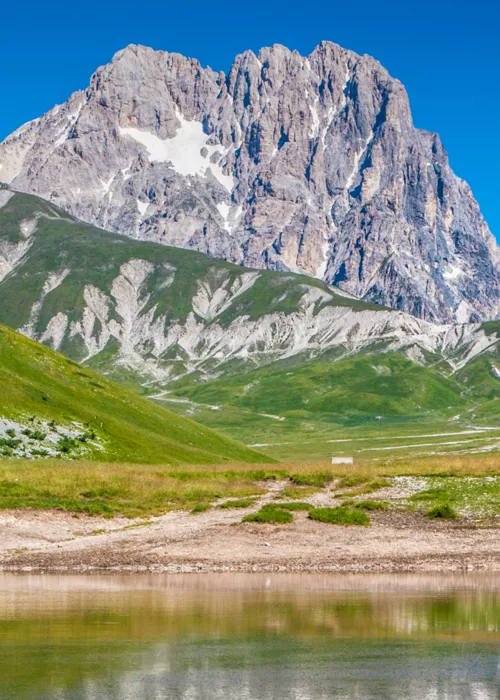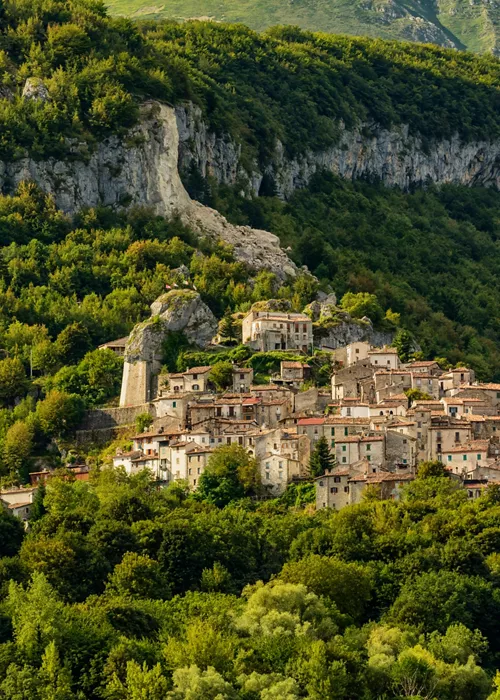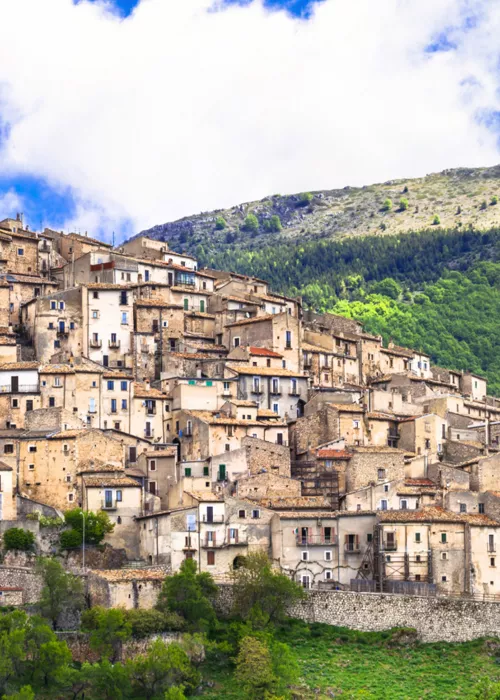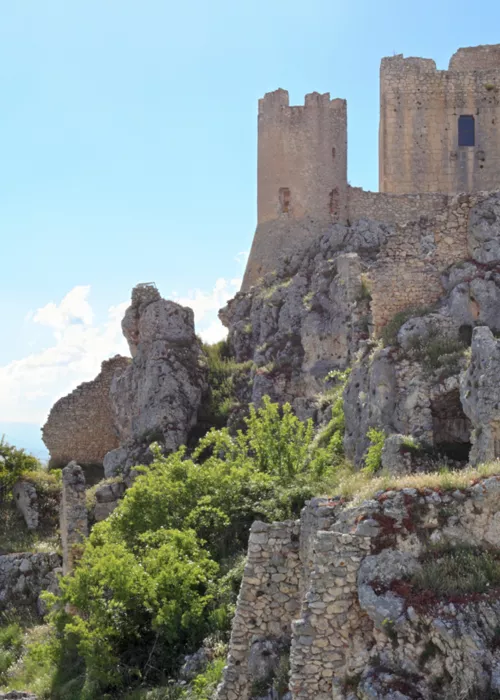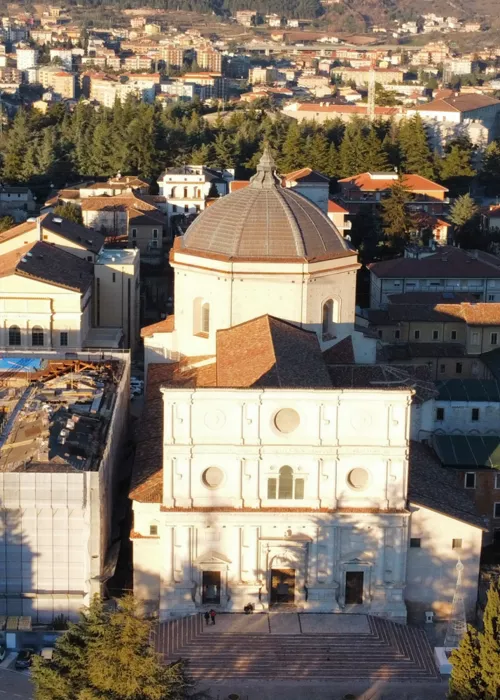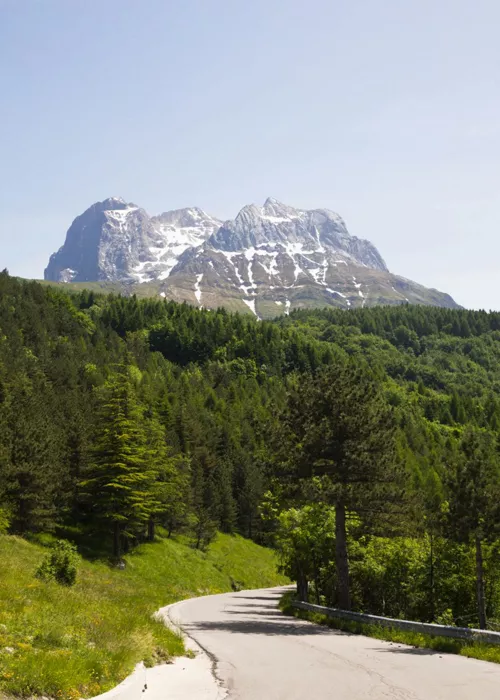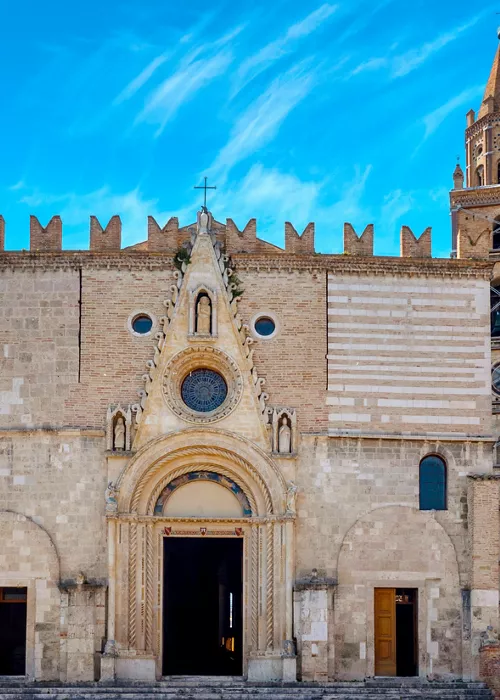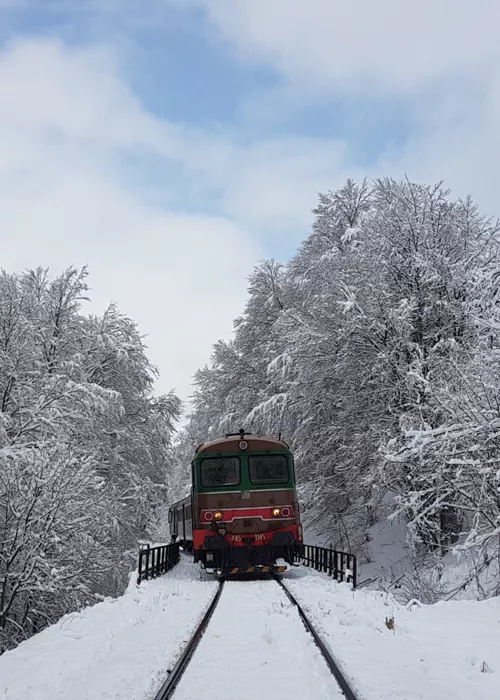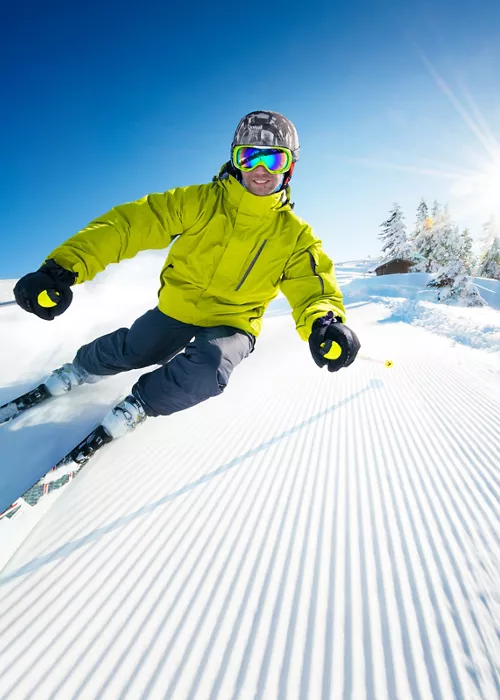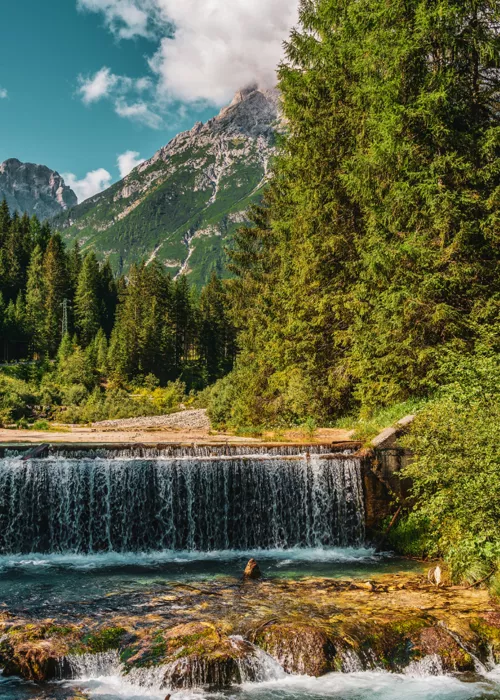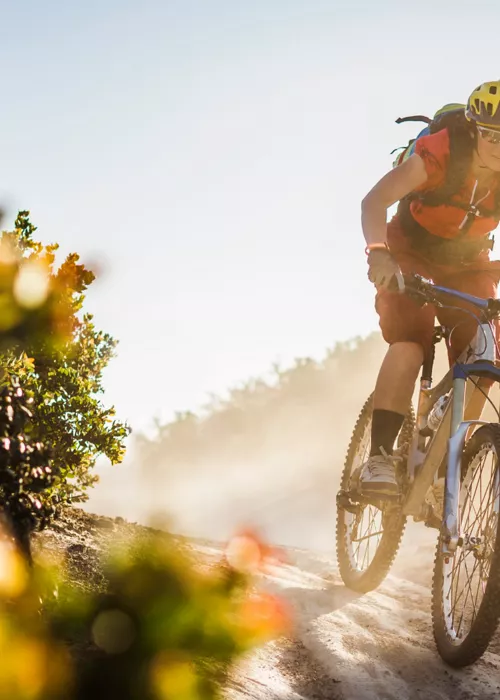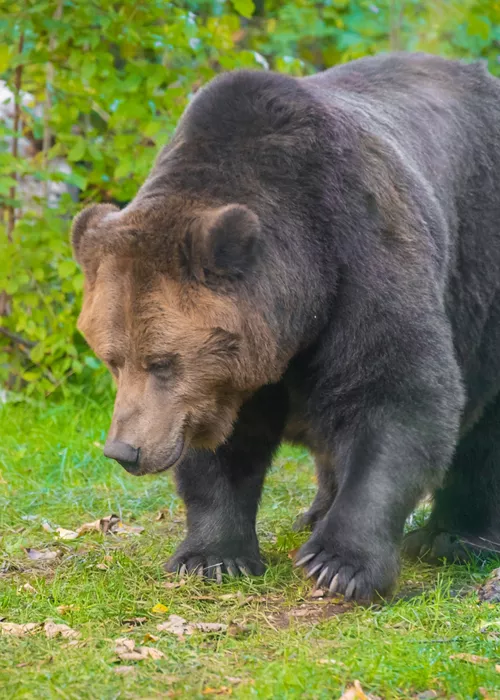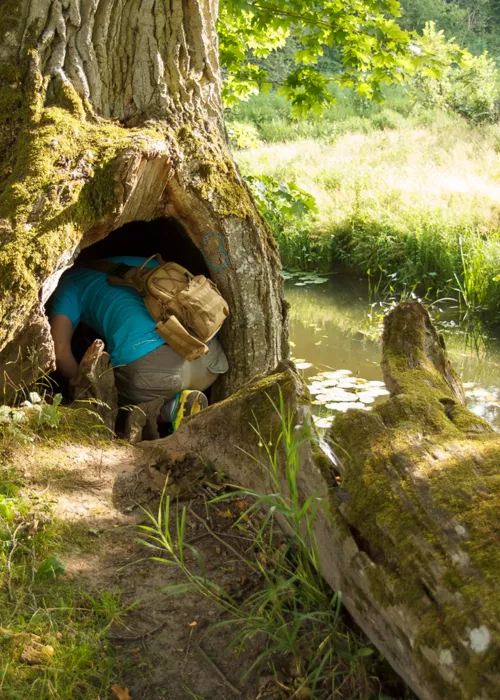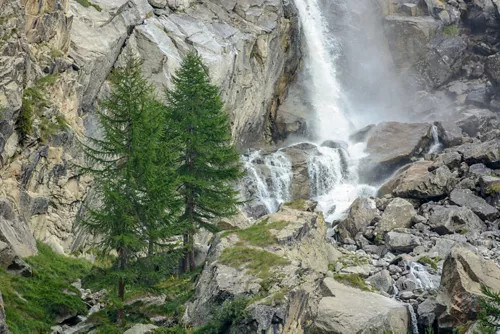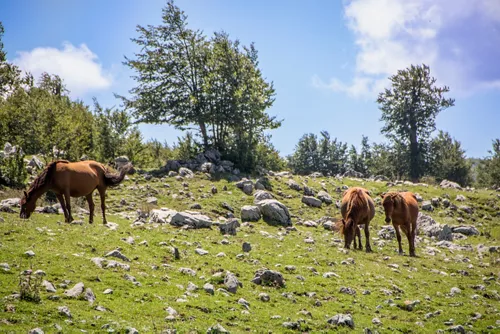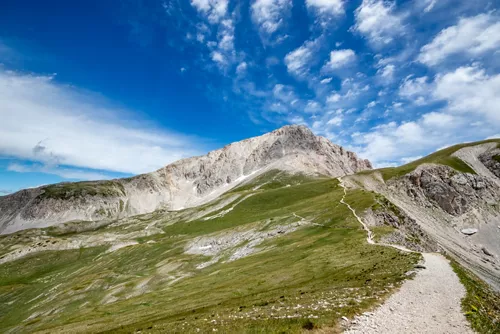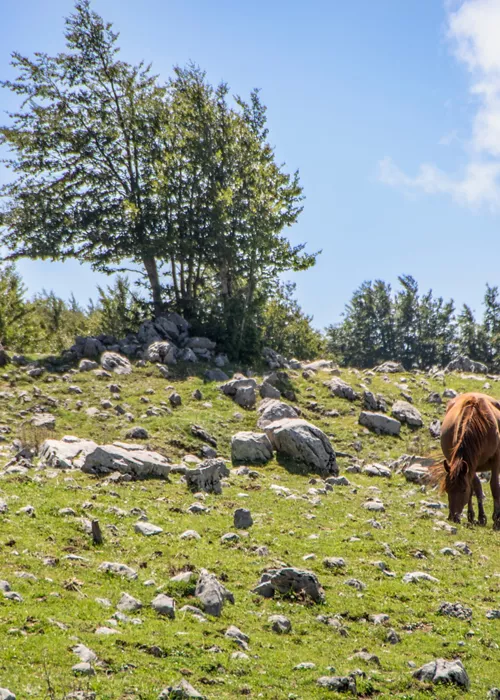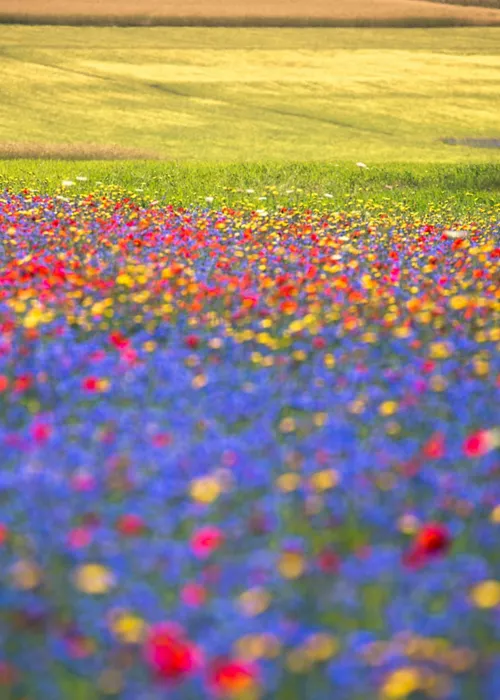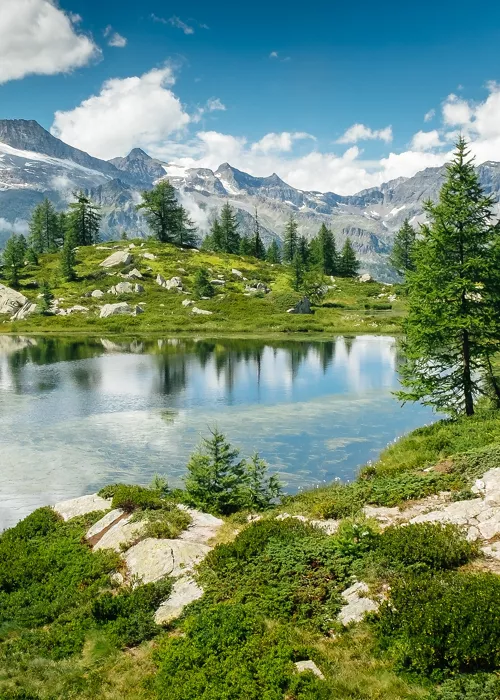Gran Sasso and Monti della Laga National Park
5 minutes
Covering an area that includes three regions, Abruzzo, Lazio and Le Marche, the Park is a very complex area, divided into two distinct biogeographical regions: "Euro-Siberian" and "Mediterranean". The morphological diversity of the mountains and the high altitudes they reach make this protected area a treasure of exceptional biological richness. From the remains of the glaciers at high altitudes, to the vastness of the plains of Campo Imperatore at the foot of Corno Grande, as far as the almond trees, vineyards and olive groves further down the valley, the scenery offered by the Park goes on forever. Silent, except when flowing over jumps and waterfalls, the Tirino (the river with some of the clearest water in Europe!) is another central element of the Park: the local flora and fauna draw all the energy they need to flourish along its banks. In addition to the Tirino, several rivers and streams run through the park, bringing their energy and vitality.
Itineraries
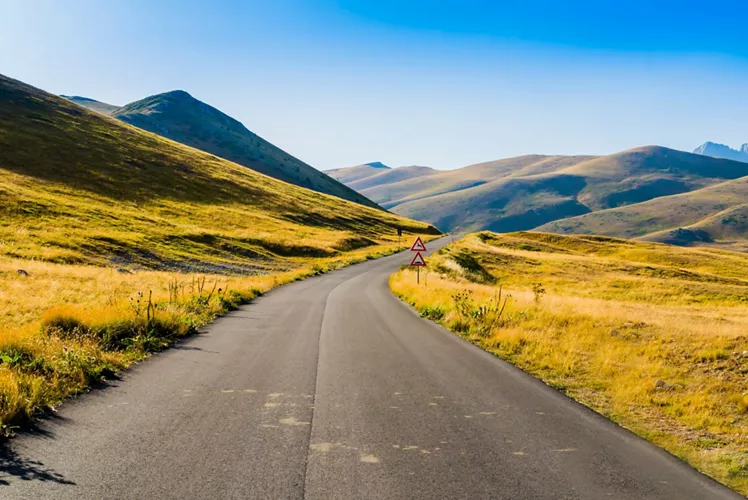
Moving through living, vibrant nature on the trail of ancient villages, archaeological sites, castles and abbeys, along prairies, plateaus, vertiginous ridges and impressive rock walls: these are the experiences you can hope to enjoy along the many pathways dotted through the Park. There are trails to suit all abilities, such as the 15 km route that joins Nerito (1393 m), a delightful village among the chestnut trees, to the lake of Campotosto (839 m), and others for expert hikers (when not mountaineers!), so everyone can find their own personal way to experience the wonders of the park. Of course, these are paths to be travelled on foot but there are also some dedicated to mountain bike and horse-riding enthusiasts. The Gran Sasso Horse Riding Trail - for example - covers almost 500 km, although some can only be tackled accompanied by a guide.
Sports in the area

The particular layout of the Park offers scenarios suitable for practising a variety of sporting activities: from water sports in the streams and rivers, most notably including the Tirino (one of the top picks for canoe trips) to those in which you engage "skin to skin" with nature, such as climbing, with natural gyms among the ancient beech woods of the Aschiero forest and thrilling walls just behind the Gran Sasso.
Depending on the season, you can take part in typical winter activities in the ski resorts of the Park, for example at Campo Imperatore. These include skiing, ski mountaineering, and snowboarding, but also the classic snowshoeing. In summer, instead of skis, people hike or use mountain bikes to travel through the local valleys and forests.
Experiences
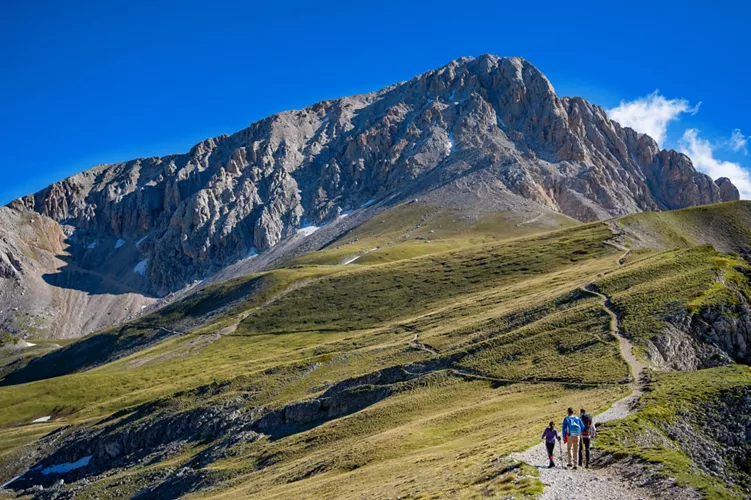
The calendar of events drawn up by the Park organization is probably one of the busiest in the area, offering new experiences to visitors: from birdwatching courses to those for environmental operators, without forgetting the many tours of the Park’s countless beauties, such as the Area Faunistica del Cervo (Deer Park) on the outskirts of Abetina di Cortino, a naturalistic site famous for its many grand, centuries-old silver firs and the Botanical Garden of the Park, an incredible garden open to the public at the Convent of San Colombo, which can be visited free of charge in the town of Barisciano.
In winter, many of the trails become accessible to tackle on skis or with snowshoes.
Attractions

The protected territory of the Park hosts many very interesting towns and villages to visit. Pietracamela - on the route that goes up to Gran Sasso - is considered one of the most beautiful villages in Italy and has retained its charm of times gone by. The delightful centre of Castel del Monte, nestled on a hill, is another one of Italy’s Most Beautiful Villages and dates back to the eleventh century B.C.E. - in fact, the most ancient finds of the necropolis discovered in the plain south of the village can be traced back to this period. The Roman civilization in the Park also left its marks, which can today be seen in the sites of Grotta S. Angelo at Ripe di Civitella del Tronto, in the monumental Picenian necropolis of Campovalano di Campli in the Teramo area and of Fossa in the Aquila area. Also worth a visit is the Church of San Salvatore, built in the 14th century on the remains of a temple from the 3rd-2nd century B.C. in Cortino, as are the remains of Rocca Calascio, a 12th century Norman fortification and the set of numerous films including Ladyhawke and The name of the Rose.
Fine food and wine
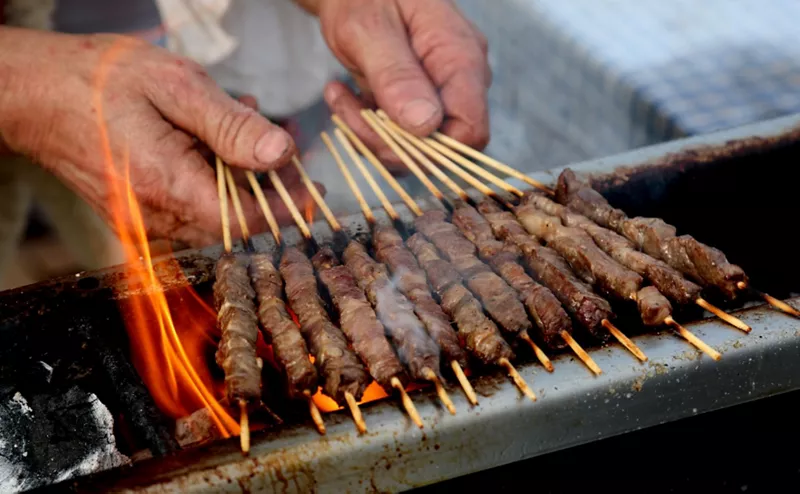
Ancient crops, native breeds of animals: in the past, these two elements made the fortune of the mountain villages, and today they still play an important role in the local productive fabric. The biodiversity heritage of the Park includes valuable products such as the saffron of L'Aquila (when it flowers, every year, as the snow melts, it attracts thousands of curious people to Campo Imperatore), and in general all the legumes of the L'Aquila area. Chestnuts (the largest variety of chestnuts), meats, cheeses and honey in many varieties are other key products offered by the Park area, besides being an authentic expression of the territory. There are many typical recipes, from first courses, for which visitors are spoiled for choice (from the timbale of scrippelle or scorpelle, to spaghetti alla chitarra, made with egg). And from the local cured meat products such as Ventricina, to the fantastic grilled meats, notably the arrosticini, typical, tasty skewers made with local mutton.
Hospitality
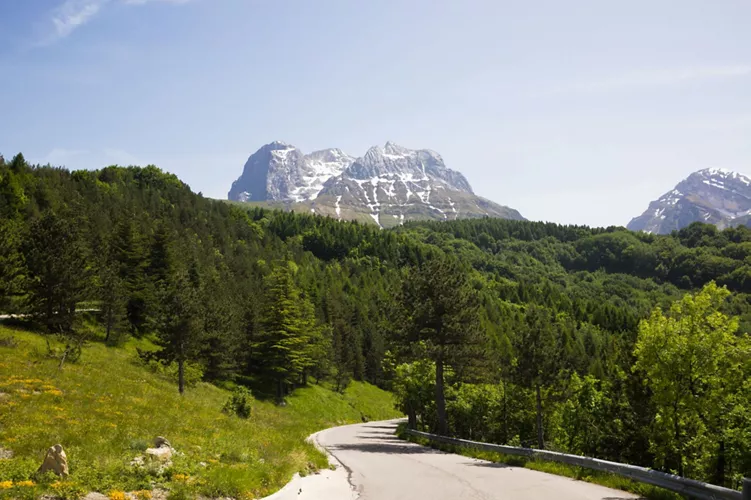
As far as hospitality is concerned, the Park truly offers something for everyone: from room rentals in the local villages, to hotels, hostels, refuges, and campsites. In Prati di Tivo, just to give an example, visitors can camp in tents hanging among the trees in the woods, to secure a privileged vantage point during the night and discover the many inhabitants of the woods that are especially active after dark.
Park Services
There are various services available to Park visitors, from classic equipment rentals (bikes near the trails, or canoes along the stretches of water where you can practice this activity), to the availability of guides to gain insights on specific aspects of the local area. There are four information points to meet the needs of visitors and these are located in the territories of L'Aquila and Teramo, precisely in S. Pietro di Isola del Gran Sasso, Crognaleto, S. Stefano di Sessanio and Capitignano.

